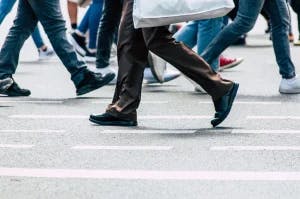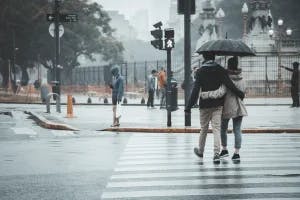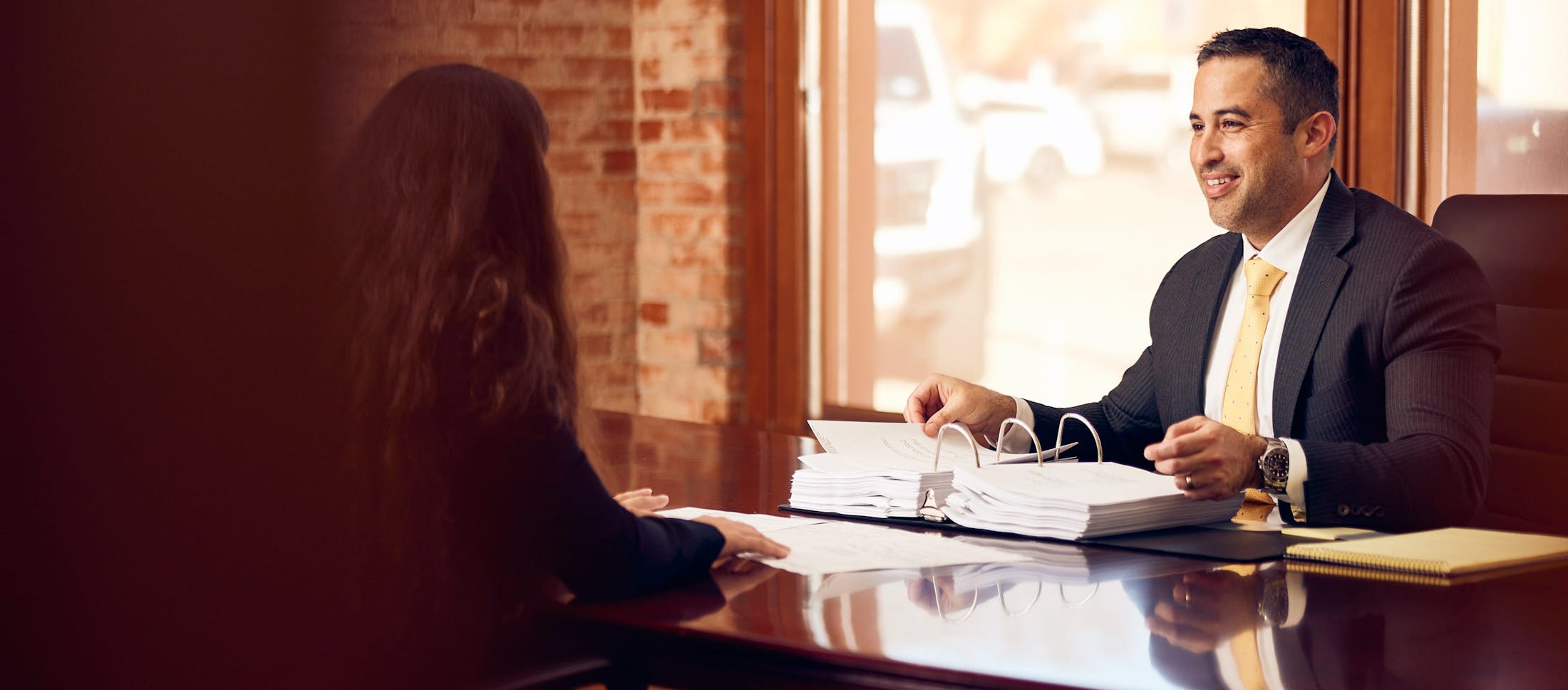What Are the Most Important Things to Do to Stay Safe as a Pedestrian
Imagine this: Youre walking down the street, minding your own business, and suddenly a car comes out of nowhere, narrowly missing you. The truth is, pedestrian accidents happen more often than you might think. When partnering with Brian C. Gutierrez, we will delve into what are the most important things to do to stay safe as a pedestrian, from managing safely and mastering crosswalks to understanding the shared responsibility between drivers and pedestrians. By following these tips, you can significantly reduce the risk of accidents and ensure your safety on the road.

Brian C. Gutierrez is dedicated to advocating for the rights of pedestrians, offering legal support and guidance to those who have been involved in accidents. With years of experience in personal injury law, Brian C. Gutierrez will work tirelessly to ensure you receive the compensation you deserve. Don’t let a momentary lapse in safety compromise your well-beingcall our team at 979-271-5338 for a free consultation and take the first step towards securing your rights and safety.
Navigating Safely: Understanding Pedestrian Vulnerability
Pedestrians are some of the most vulnerable road users, and their safety is a pressing concern for all age groups. Grasping the significance of safe navigation techniques and compliance with traffic signals can mean the difference between a safe trip and a potentially fatal accident. With over 6,000 pedestrian fatalities from traffic accidents in 2018, everyone must keep pedestrian safety tips in mind and actively apply them daily to keep pedestrians safe.
However, staying safe as a pedestrian is not only about following traffic laws. It is equally important to be aware of ones surroundings and remain vigilant to potential hazards.
Sidewalk Strategies: Walking Facing Traffic
One of the most crucial safety tips for pedestrians is to walk facing traffic whenever possible. This simple practice allows pedestrians to have a better view of oncoming vehicles, enabling them to react promptly if necessary. In Texas, pedestrians are permitted to walk on roadways facing oncoming traffic when sidewalks are obstructed or hazardous, to reduce traffic crashes involving pedestrians.
Walking facing traffic is not merely a personal choice; its a safety issue. Advantages of this safety practice include:
- Enhanced visibility
- Increased awareness
- Improved interaction between pedestrians and vehicles
- A better sense of control
Remember, always be conscious of the areas speed limit and adjust your walking speed to match. Walking at a pace that aligns with the speed of nearby vehicles allows both drivers and pedestrians to anticipate each other’s movements more effectively, reducing the risk of accidents. This tip emphasizes the importance of adapting to the traffic conditions in a given area, promoting a safer environment for everyone sharing the road.
The Perils of Parked Cars
Parked cars can pose significant dangers to pedestrians if they are not cautious and aware of potential hazards. Some common risks include:
- Slipping or tripping in parking lots
- Vehicle collisions in congested areas
- Reversing cars that may not be aware of pedestrians
- Limited space for maneuvering
- Obstructed visibility, making it difficult for pedestrians and drivers to see each other.
To prevent accidents involving parked cars, pedestrians should:
- Clear obstacles before crossing
- Choose to back into parking spots when possible
- Stay mindful of the possibility of parked cars pulling out and drivers blind spots
- Cautiously pass vehicles stopped at crosswalks.
Mastering Crosswalks and Intersections
Properly navigating crosswalks and intersections is vital for pedestrian safety. A variety of pedestrian crosswalks exist, including raised crosswalks, high-visibility crosswalks, and basic crosswalks with two simple lines. Each of these provides a designated area for pedestrians to safely cross the road. Wearing reflective materials can further enhance pedestrian safety.
However, even with designated crosswalks, pedestrians can make mistakes when crossing intersections, such as:
- Failing to make eye contact with drivers prior to crossing
- Assuming that a crosswalk is clearly delineated with solid lines
- Not leaving enough space when paused at an intersection
Heeding Pedestrian Signals
Paying attention to pedestrian signals and obeying traffic rules can prevent accidents. To further ensure safety, it is crucial to obey traffic signals. There are different types of pedestrian signals, such as a continuous WALKING PERSON signal, which indicates that pedestrians are authorized to initiate crossing, and a continuous HAND signal, which indicates that pedestrians should not commence crossing.
Disregarding pedestrian signals amplifies the risk of accidents due to the disruption of traffic flow and the consequent confusion of both pedestrians and drivers. When pedestrians disregard signals, they may attempt to cross streets when it is not safe to do so, thus heightening the possibility of being struck by a vehicle. Moreover, drivers may not anticipate pedestrians crossing against the signal, thus leading to collisions. It is imperative to adhere to pedestrian signals to guarantee the safety of all on the road.
Making Yourself Seen
Being visible to drivers, especially during nighttime, is key to pedestrian safety. Wearing bright or fluorescent clothing, like yellow or fluorescent yellow-green, can notably enhance your visibility to drivers. Using reflective accessories or clothing can also boost your visibility, especially under low-light conditions or at night.
Using a flashlight at night can further improve pedestrian safety by:
- Facilitating improved vision
- Enabling pedestrians to identify potential risks and impediments in their route
- Assisting pedestrians in being more discernible to drivers, decreasing the probability of accidents.
Also, a flashlight can offer a sense of safety and certainty while maneuvering through dark or deserted areas.
The Dangers of Distraction

Distractions, like cell phone use, can heighten the risk of accidents; maintaining focus on your surroundings is key. Indeed, phone use is the leading cause of distracted walking incidents. These incidents may lead to severe injuries, especially in residential areas. The solution is to stop using phones while walking, not just in crosswalks and intersections.
In addition to avoiding phone use, pedestrians should also stay alert by refraining from wearing earbuds or headphones that can block out important auditory cues from their environment, such as approaching vehicles or warning signals. Staying alert and focused on your surroundings is a critical aspect of pedestrian safety.
The Role of Reflective Clothing
Wearing reflective clothing can help pedestrians be more visible to drivers, especially in low-light conditions. The optimal types of reflective clothing for pedestrians include fluorescent clothing and clothing with retro-reflective elements, which aid in enhancing visibility and bolstering pedestrian safety.
Besides wearing reflective clothing, pedestrians can also use reflective accessories, like vests, bands, or even basic reflective tape, to enhance their visibility to drivers. Research indicates that pedestrians frequently overestimate their visibility and overlook the benefits of high-visibility clothing. Incorporating reflective elements into your attire can greatly enhance your pedestrian safety.
Speed and Sobriety: Your Safety Allies
Maintaining a safe walking speed and avoiding alcohol consumption can significantly improve pedestrian safety. The suggested walking speed for pedestrian safety is 4.4 feet/second. Walking at a safe speed allows pedestrians to react more quickly to any changes in their environment or unexpected hazards.
Additionally, walking while intoxicated can be extremely dangerous. It can cause significant motor impairment, reduced judgment and reaction time, and poor decision-making. In reality, walking while drunk may be as risky as drunk driving. It’s important to avoid alcohol when walking is critical to ensure ones safety.
School Zones and Residential Areas
Extra caution should be taken in school zones and residential areas, where children may be present. Pedestrians in school zones and residential areas are likely to encounter hazards such as distracted walking and driving, speeding in school zones, crossing at non-designated areas, not yielding to pedestrians, and limited visibility. Traffic regulations in these areas often include ceasing movement and yielding to pedestrians crossing in the crosswalk or at intersections, always ceasing movement for a school patrol officer, and remaining vigilant when in school zones, near playgrounds or parks, and in all residential areas.
To be more visible to drivers in school zones and residential areas, pedestrians can wear bright or light-colored clothing, use reflective accessories or clothing, and comply with pedestrian stop signs. Enhancing the markings of school zones with high-friction surface markings or rumble strips can also boost pedestrian safety.
Shared Responsibility: Drivers and Pedestrians
Both drivers and pedestrians share the responsibility of ensuring safety on the road. Effective communication and cooperation between drivers and pedestrians are vital to maintaining a safe environment for all road users. Drivers should always be prepared to yield to pedestrians, while pedestrians should remain vigilant and make eye contact with drivers to ensure they are aware of their presence and intentions.
Pedestrians effectively using hand signals can help convey their intentions to drivers and other road users, such as turning or crossing the road. Eye contact between pedestrians and drivers is crucial in enabling effective communication and fostering safer interactions between pedestrians and drivers.
Communication Is Key
Establishing eye contact and using hand signals can help drivers and pedestrians understand each others intentions, thereby reducing the risk of accidents. Making eye contact enables pedestrians to ensure that drivers have seen them and are aware of their presence, thereby reducing the risk of accidents. Additionally, eye contact can assist pedestrians in gauging the intentions of drivers, such as whether they are slowing down or stopping to allow them to cross safely.
Hand signals can also be used to enhance visibility, especially in low-light conditions. By using hand signals, pedestrians can make themselves more visible to drivers and increase their chances of being noticed. Pedestrians must understand and utilize hand signals effectively to ensure their safety and communicate their intentions to other road users.
Safe Practices When No Sidewalk is Available
When no sidewalk is available, pedestrians should follow safe practices, such as:
- Walking on the shoulder and facing traffic. Walking on the shoulder of the road denotes traversing the region adjacent to the roadway, typically designated for pedestrians when a sidewalk is not present.
- In the absence of sidewalks, pedestrians are generally permitted to traverse the road, unless explicitly prohibited.
- Nevertheless, it is advisable to walk against the direction of traffic for increased visibility.
In rural areas and on highways lacking sidewalks, pedestrians should always sidewalk walk facing traffic. Walking against traffic in these situations gives pedestrians a better view of oncoming vehicles and allows for quick reactions if needed.
Precautions When Exiting Vehicles
Exercising precautions when exiting vehicles, like checking for oncoming traffic, can avert pedestrian-involved accidents. The Dutch Reach method is a technique for safely opening car doors in traffic, which entails using the hand on the doors opposite side to open it, requiring the body to turn to check for oncoming traffic before opening the door. This technique helps prevent accidents with cyclists or other vehicles.
Using side mirrors before exiting a vehicle is also critically important, as it enables the detection of any approaching vehicles or objects from the side, thus promoting safety and averting potential accidents. By following these precautions, you can greatly mitigate the risk of pedestrian-involved accidents when exiting vehicles and exiting driveways.
How Brian C. Gutierrez Can Help You
Pedestrian safety is a shared responsibility between drivers and pedestrians. By following safety tips and practices such as navigating safely, mastering crosswalks and intersections, staying focused on your surroundings, and maintaining a safe walking speed, you can significantly reduce the risk of pedestrian accidents. Remember, communication and cooperation between drivers and pedestrians are vital to ensuring the safety of all road users.
If you or a loved one has been involved in a pedestrian accident, Brian C. Gutierrez and his team of dedicated car accident attorneys can provide the experienced legal assistance you need to ensure you receive the compensation you deserve. With over 15 years of trial law experience and success in managing over 1,000 personal injury cases in Texas, Brian Gutierrez has the knowledge and experience necessary to represent your interests in court.
Brian C. Gutierrez and his personal injury team operate on a contingency fee basis, meaning payment is only due if they are successful in securing a favorable outcome for your case. To schedule a free case evaluation and discuss your legal options, contact the Gutierrez Law office at 979-271-5338 or visit https://gutierrez-law.com/.
Frequently Asked Questions
.
What are some common hazards associated with parked cars for pedestrians?
Pedestrians should be aware of the potential hazards posed by parked cars, such as slipping or tripping in parking lots, vehicle collisions in congested areas, reversing cars unaware of their presence, and limited space to maneuver.
Is there a shared responsibility between pedestrians and drivers for road safety?
Yes, road safety is a shared responsibility. Pedestrians should follow traffic rules, use designated crosswalks, and make themselves visible to drivers. Similarly, drivers must be vigilant, yield to pedestrians at crosswalks, and adhere to speed limits. Both parties play a crucial role in creating a safe environment, and understanding and respecting each other’s rights on the road is essential for preventing accidents.
How can pedestrians increase their visibility to drivers?
Pedestrians can increase their visibility by wearing bright or fluorescent clothing, utilizing reflective accessories or clothing, and using a flashlight at night.
Talk to Us Today
Get a free case evaluation

